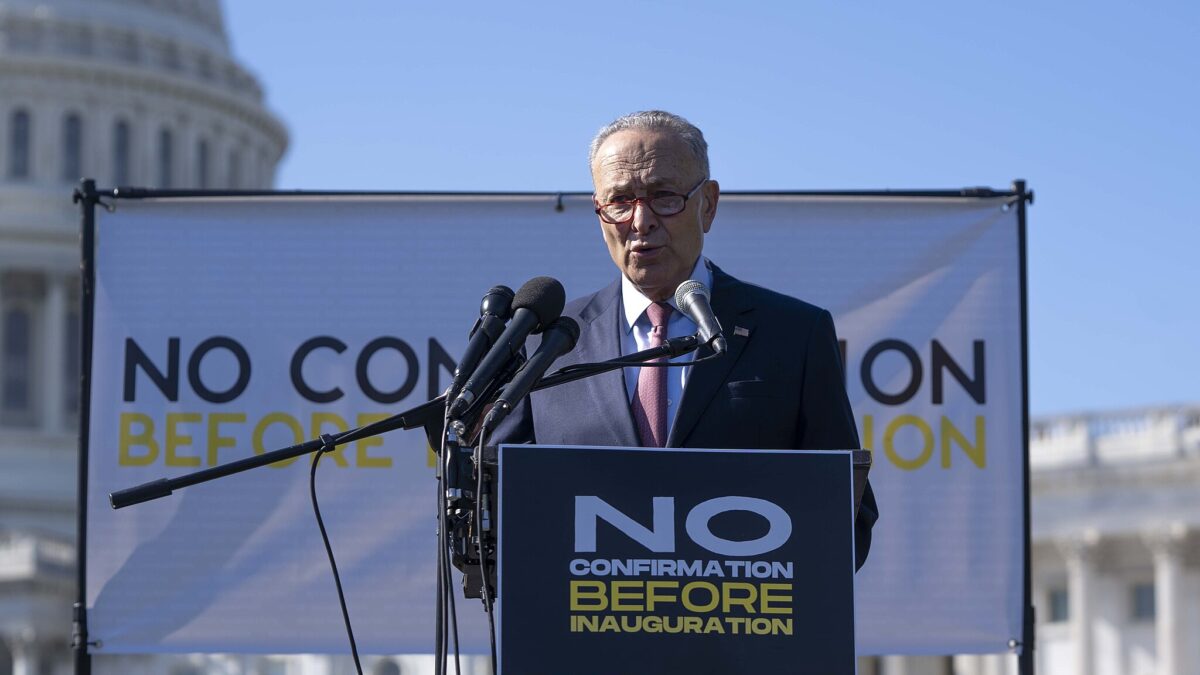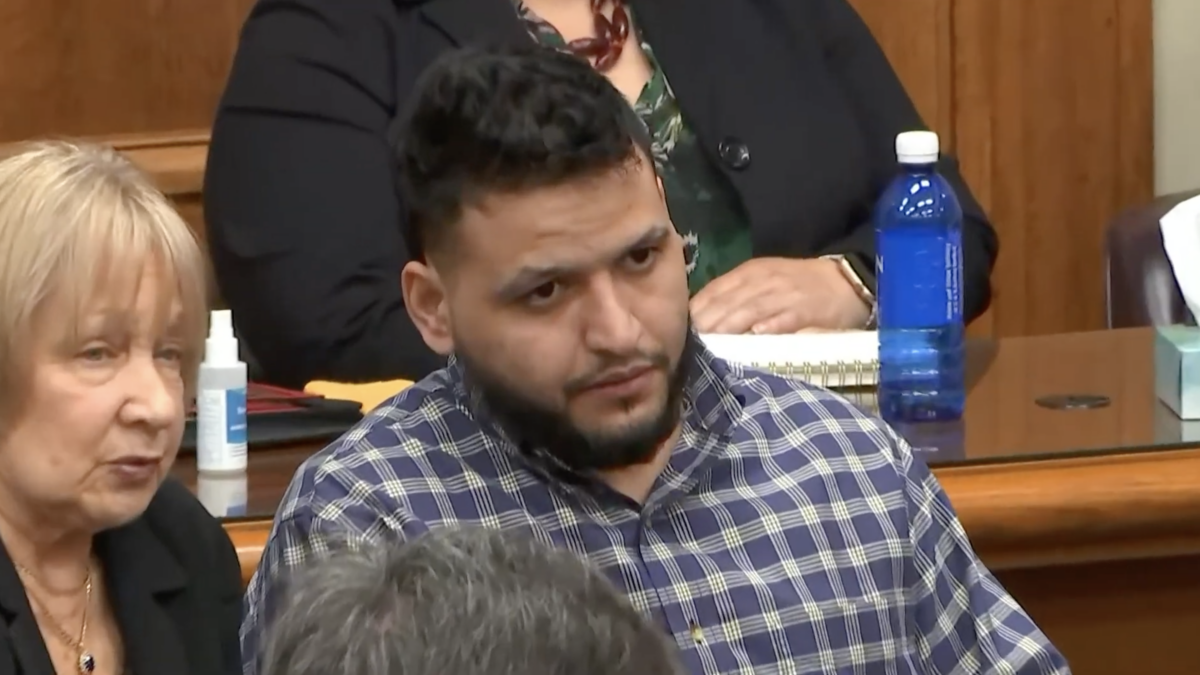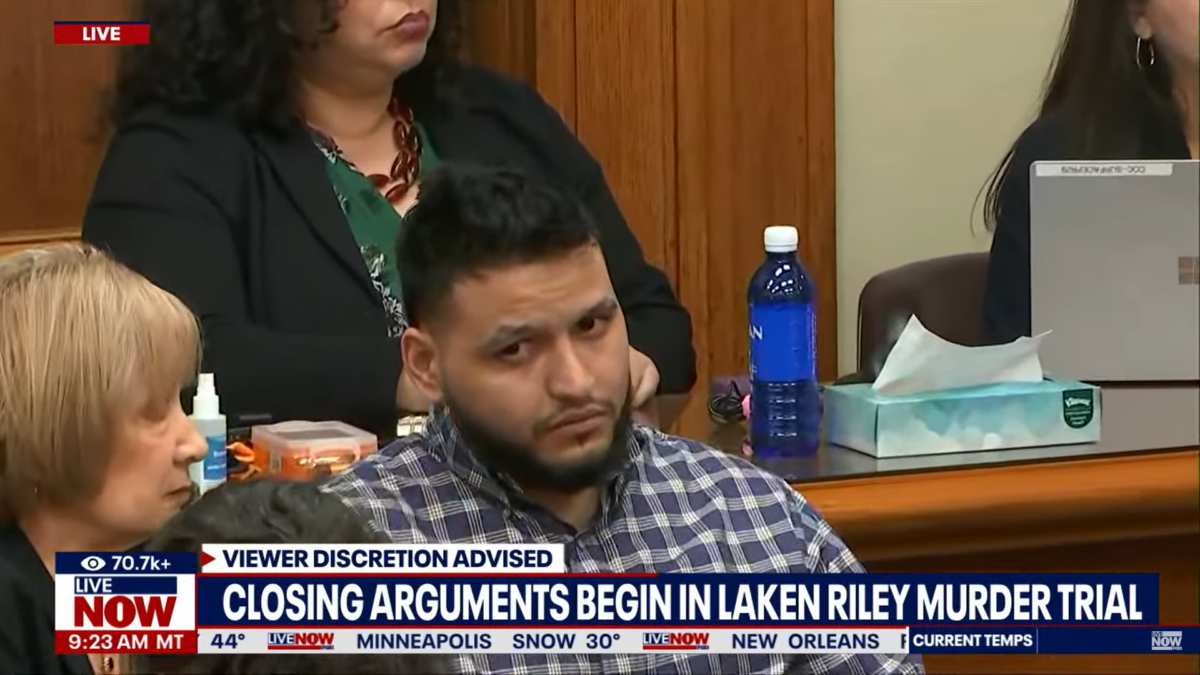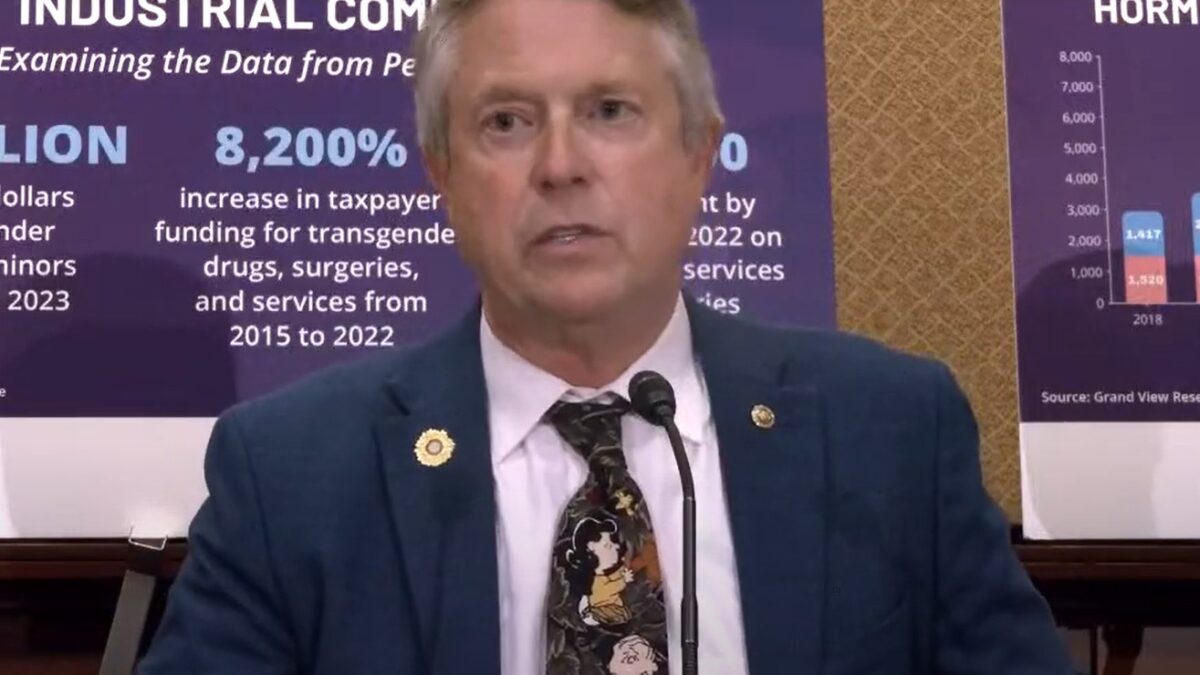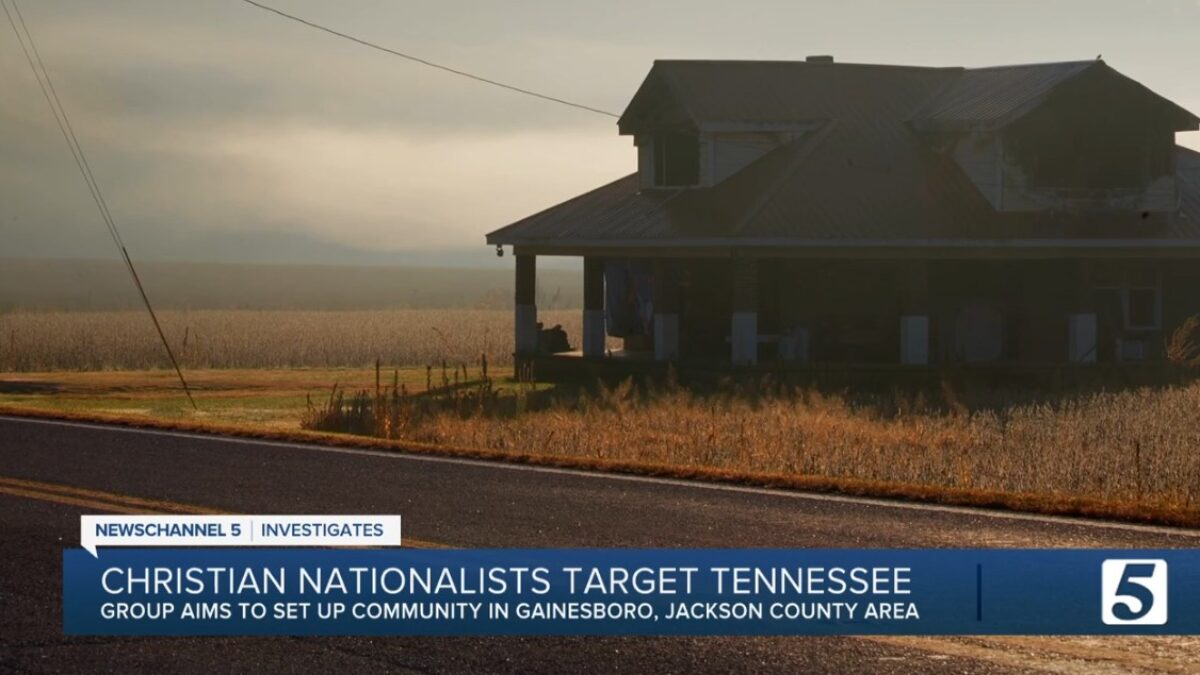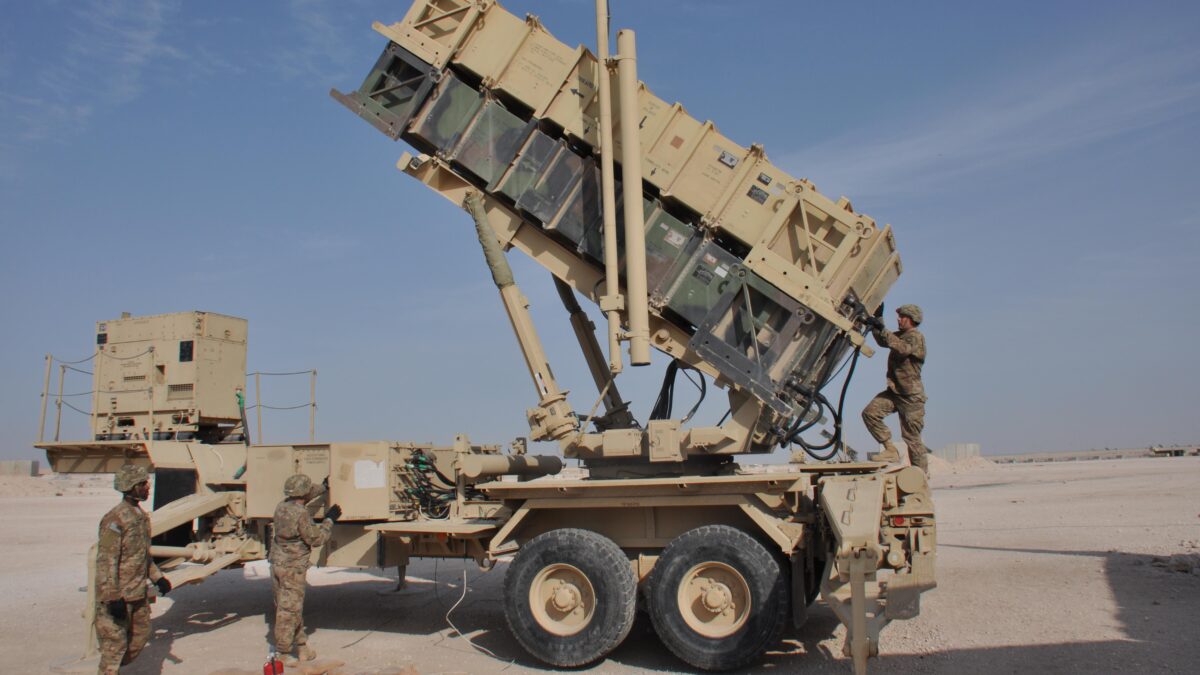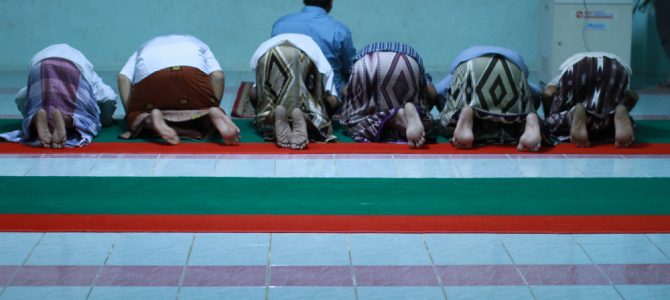
The following is an excerpt of the Hoover Institution publication “The Challenge of Dawa: Political Islam as Ideology and Movement and How to Counter It,” by Ayaan Hirsi Ali. You may read the full report here. This excerpt was originally published in Defining Ideas. Copyright © 2017 by the Board of Trustees of the Leland Stanford Junior University.
It is refreshing and heartening that President Trump acknowledges the need for an ideological campaign against “radical Islam.” This deserves to be called a paradigm shift.
President Bush often referred to a “war on terror,” but terror is a tactic that can be used for a variety of ideological objectives. President Obama stated that he was opposed to “violent extremism” and even organized an international summit around this subject. Yet at times he made it seem as if he worried more about “Islamophobia” than about radical Islam.
In a speech to the United Nations General Assembly in 2012, Obama declared: “The future must not belong to those who slander the prophet of Islam.” In what follows, however, I shall refer to “political Islam” rather than radical Islam.
Political Islam is not just a religion as most Western citizens recognize the term “religion,” a faith; it is also a political ideology, a legal order, and in many ways also a military doctrine associated with the campaigns of the Prophet Muhammad. Political Islam rejects any kind of distinction between religion and politics, mosque and state. Political Islam even rejects the modern state in favor of a caliphate. My central argument is that political Islam implies a constitutional order fundamentally incompatible with the U.S. Constitution and with the “constitution of liberty” that is the foundation of the American way of life.
Yes, Islamists Have Everything to Do with Islam
There is no point in denying that political Islam as an ideology has its foundation in Islamic doctrine. However, “Islam,” “Islamism,” and “Muslims” are distinct concepts. Not all Muslims are Islamists, let alone violent, but all Islamists—including those who use violence—are Muslims. I believe the religion of Islam itself is indeed capable of reformation, if only to distinguish it more clearly from the political ideology of Islamism. But that task of reform can only be carried out by Muslims.
Insisting that radical Islamists have “nothing to do with Islam” has led U.S. policy makers to commit numerous strategic errors since 9/11. One is to distinguish between a “tiny” group of extremists and an “overwhelming” majority of “moderate” Muslims. I prefer to differentiate among Medina Muslims, who embrace the militant political ideology adopted by Muhammad in Medina; Mecca Muslims, who prefer the religion originally promoted by Muhammad in Mecca; and reformers, who are open to some kind of Muslim Reformation.
These distinctions have their origins in history. The formative period of Islam can be divided roughly into two phases: the spiritual phase, associated with Mecca, and the political phase that followed Muhammad’s move to Medina. There is a substantial difference between Qur’anic verses revealed in Mecca (largely spiritual in nature) and Qur’anic verses revealed in Medina (more political and even militaristic). There is also a difference in the behavior of the Prophet Muhammad: in Mecca, he was a spiritual preacher, but in Medina he became a political and military figure.
It cannot be said often enough that the United States is not at war with Islam or with Muslims. It is, however, bound to resist the political aspirations of Medina Muslims where those pose a direct threat to our civil and political liberties. It is also bound to ensure that Mecca Muslims and reforming Muslims enjoy the same protections as members of other religious communities who accept the fundamental principles of a free society. That includes protection from the tactics of intimidation that are so central to the ideology and practice of political Islam.
Background on Today’s State of Affairs
The conflict between the United States and political Islam in modern times dates back to at least 1979, when the U.S. embassy in Tehran was seized by Islamic revolutionaries and 52 Americans were held hostage for 444 days. In the decades that followed, the 1993 World Trade Center bombing and the 1998 embassy bombings in Kenya and Tanzania reminded Americans of the threat posed by political Islam.
But it was not until the 9/11 attacks that political Islam as an ideology attracted sustained public attention. The September 11, 2001, attacks were inspired by a political ideology that has its foundation in Islam, specifically its formative period in Medina.
Since 9/11, at least $1.7 trillion has been spent on combat and reconstruction costs in Iraq, Syria, Afghanistan, and Pakistan. The total budgetary cost of the wars and homeland security from 2001 through 2016 is more than $3.6 trillion. Yet in spite of the sacrifices of more than 5,000 armed service personnel who have lost their lives since 9/11 and the tens of thousands of American soldiers who have been wounded, today political Islam is on the rise around the world.
Violence is the most obvious—but not the only—manifestation of this trend. Jihadist groups have proliferated all over the Middle East and North Africa, especially where states are weak and civil wars rage (Iraq, Libya, Somalia, and Syria, not forgetting northern Nigeria). Islam-inspired terrorists also have a global reach. France is in a permanent state of emergency, while the United States has been profoundly shaken by terror attacks in Boston (the Marathon bombers); Fort Hood, Texas; San Bernardino, California; Orlando, Florida; and Ohio State University, to name but a few.
Of the last 16 years, the worst year for terrorism was 2014, with 93 countries experiencing attacks and 32,765 people killed. The second worst was 2015, with 29,376 deaths. Last year, four radical Islamic groups were responsible for 74 percent of all deaths from terrorism: the Islamic State (also known as ISIS), Boko Haram, the Taliban, and al-Qaeda. Although the Muslim world itself bears the heaviest burden of jihadist violence, the West is increasingly under attack.
How large is the jihadist movement in the world? In Pakistan alone, where the population is almost entirely Muslim, 13 percent of Muslims surveyed—more than 20 million people—said that bombings and other forms of violence against civilian targets are often or sometimes justified in order to defend Islam from its enemies.
Disturbingly, the number of Western-born Muslim jihadists is sharply increasing. The United Nations estimated in November 2014 that some 15,000 foreign fighters from at least 80 nations have traveled to Syria to join the radical jihadists. Roughly a quarter of them come from Western Europe.
Yet the advance of political Islam manifests itself not only in acts of violence. Even as billions are spent on military intervention and drone strikes, the ideological infrastructure of political Islam in the United States continues to grow because officials are concerned only with criminal conspiracies to commit acts of violence, not with the ideology that inspires such acts.
According to one estimate, 10−15 percent of the world’s Muslims are Islamists. Out of well more than 1.6 billion, or 23 percent of the globe’s population, that implies more than 160 million individuals. Based on survey data on attitudes toward sharia in Muslim countries, total support for Islamist activities in the world is likely significantly higher than that estimate.
What Scholarship on Political Islam Says
There are two sets of academic literature aimed at helping policy makers grapple with the threat of radical Islam. In the first set, Islamic religious ideas form a marginal factor at best. Authors such as John Esposito, Marc Sageman, Hatem Bazian, and Karen Armstrong argue that a combination of variables such as poverty and corrupt political governance lies at the root of Islamic violence. They urge the U.S. government and its allies to tackle these “root causes.”
For these authors, devoting attention to religious motives is at best irrelevant, and at worst a harmful distraction. They are not concerned about political Islam as an ideology, only about individual acts of violence committed in its name.
A second set of scholars—which is growing in importance—sees a radical ideology derived from Islamic theology, principles, and concepts as the driving force of our current predicament. Scholars such as Michael Cook, Daniel Pipes, Jeffrey Bale, and David Cook, and authors such as Paul Berman and Graeme Wood, acknowledge that factors such as poverty and bad governance are relevant, but argue that U.S. policy makers should take seriously the religious ideology that underlies Islamist violence.
The failed polices since 9/11 (and even before) in the struggle against radical Islam were built on false premises derived from the first set of literature, which absolves Islam wholly of the atrocities that it inspires. As the failure of American strategy since 2001 has become increasingly clear, however, the view has gained ground that the ideology underlying Islamist violence must be tackled if our efforts are to be successful.
This view is not only held by a few Western scholars. All over the world, there are now Muslims who are engaged in a long-overdue process of reassessing Islamic thought, scripture, and laws with a view to reforming them. These Muslim reformers can be found in positions of leadership in some governments, in universities, in the press, and elsewhere. They are our natural allies. An important part of our future policies in the war on Islamic extremism should be to encourage and empower them.
It’s Time to Understand Dawa
From 9/11 until now, the dominant Western response to political Islam has been to focus only on “terror” and “violent extremism.” This approach has failed. In focusing only on acts of violence, we have ignored the ideology that justifies, promotes, celebrates, and encourages those acts. By not fighting a war of ideas against political Islam (or “Islamism”) as an ideology and against those who spread that ideology, we have made a grave error.
If Islamism is the ideology, then dawa encompasses all the methods by which it is spread. The term “dawa” refers to activities carried out by Islamists to win adherents and enlist them in a campaign to impose sharia law on all societies. Dawa is not the Islamic equivalent of religious proselytizing, although it is often disguised as such by blending humanitarian activities with subversive political activities.
Dawa as practiced by Islamists employs a wide range of mechanisms to advance the goal of imposing Islamic law (sharia) on society. This includes proselytization, but extends beyond that. In Western countries, dawa aims both to convert non-Muslims to political Islam and to bring about more extreme views among existing Muslims. The ultimate goal of dawa is to destroy the political institutions of a free society and replace them with strict sharia. Islamists rely on both violent and nonviolent means to achieve their objectives.
Dawa is to the Islamists of today what the “long march through the institutions” was to twentieth-century Marxists. It is subversion from within, the use of religious freedom in order to undermine that very freedom. After Islamists gain power, dawa is to them what Gleichschaltung (synchronization) of all aspects of German state, civil, and social institutions was to the National Socialists.
There are of course differences. The biggest difference is that dawa is rooted in the Islamic practice of attempting to convert non-Muslims to accept the message of Islam. As it is an ostensibly religious missionary activity, proponents of dawa enjoy a much greater protection by the law in free societies than Marxists or fascists did in the past.
Worse, Islamist groups have enjoyed not just protection but at times official sponsorship from government agencies duped into regarding them as representatives of “moderate Muslims” simply because they do not engage in violence. Islamist groups that have been treated in this way include:
The Council on American-Islamic Relations (CAIR)
The Muslim Public Affairs Council (MPAC)
The Islamic Society of North America (ISNA)
The International Institute of Islamic Thought (IIIT)
The Islamic Society of Boston
For organizations engaging in dawa, the main elements of the strategy are:
- to have well-organized Islamist groups such as the Muslim Brotherhood claim to speak on behalf of all Muslims, while marginalizing Muslim reformers and dissidents.
- to take ownership of immigration trends to encourage the “Islamization” of Western societies by invoking hijra, the emigration of the Prophet Muhammad from Mecca to Medina.
- to reduce women to the status of reproductive machines for the purpose of demographic transformation.
- to take advantage of the focus on “inclusion” by progressive political parties in democratic societies, then to force these parties to accept Islamist demands in the name of peaceful coexistence.
- to take advantage of self-consciously progressive movements, effectively co-opting them.
- to increase Islamists’ hold over the educational system, including some charter schools, “faith” schools, and home schooling.
Typically, Islamists study target societies to identify points of vulnerability. In the United States, Islamists focus on vulnerable African-American men within prison populations, as well as Hispanic and Native American communities. Recent targets of Islamist infiltration include the Women’s March and Black Lives Matter.
Agents of dawa also systematically lobby private-sector organizations, governments, and international bodies:
- They seek to pressure governments to accede to Islamist demands on the grounds of freedom of religion or status as a religious minority.
- They urge the United Nations and the European Council to combat “Islamophobia” by devising what amounts to censorship guidelines for politicians and journalists and by punishing those who dissent.
- They press institutions such as the Associated Press to distort the language they use to suit Islamist objectives.
- They wage sustained campaigns to discredit critics of radical Islam.
The Sinews of Dawa
The global infrastructure of dawa is well funded, persistent, and resilient. From 1973 through 2002, the Kingdom of Saudi Arabia spent an estimated $87 billion to promote dawa efforts abroad. Josh Martin estimates that, since the early 1970s, Middle Eastern charities have distributed $110 billion, $40 billion of which found its way to sub-Saharan Africa and contributed heavily to Islamist ideological indoctrination there.
Nongovernmental organizations in Kuwait, Qatar, and Saudi Arabia continue to distribute large sums overseas to finance ideological indoctrination and activities. Powerful foundations such as the Qatar Foundation continue to grant financial support and legitimacy to radical Islamic ideology around the world.
Many Islamic charitable foundations use zakat (mandatory charity) funds to mix humanitarian outreach with ideological indoctrination, laying the ground for future intolerance, misogyny, and jihad, even if no violence is used in the short term. When informal funding mechanisms are included, the zakat funds available could reach “hundreds of billions of dollars” worldwide each year.
The Key Problem Is Using Our Freedoms to End Them
Let it be said explicitly: The Islamists’ program is fundamentally incompatible with the U.S. Constitution, religious tolerance, the equality of men and women, the tolerance of different sexual orientations, and other fundamental human rights.
The biggest challenge the United States faces in combating political Islam, however, is the extent to which agents of dawa can exploit the constitutional and legal protections that guarantee American citizens freedom of religion and freedom of speech—freedoms that would of course be swept away if the Islamists achieved their goals.
In 2010, one senior American intelligence analyst summed up our predicament: “In the US there are First Amendment issues we’re cognizant of. It’s not a crime to radicalize, only when it turns to violence . . . America is thus vulnerable to a threat that is not only diversifying, but arguably intensifying.”
To give just one example: A cleric in Maryland, Imam Suleiman Bengharsa, has openly endorsed the Islamic State, posted gruesome videos, and praised terrorist attacks overseas. As of February 2017, however, he remains a free man and U.S. authorities insist nothing can be done against him because he has not yet plotted to commit a specific act of violence. One expert has said that Imam Bengharsa “can take his supporters right up to the line. It’s like making a cake and not putting in the final ingredient. It’s winks and nods all the way.” This is what we are up against.
The global constitution of political Islam is formidable. The Muslim Brotherhood, with its numerous American affiliates, is an important component, but not the only one. Even if one were able to eliminate the Brotherhood overnight, the ideological infrastructure of dawa would remain powerful. The network of radical Islamist preachers, “charities,” and organizations that perpetuate political Islam is already well established inside and outside the United States.
To resist the insidious advance of political Islam, we need to develop a strategy to counter not only those who use violence to advance their politico-religious objectives—the jihadists—but also the great and complex ideological infrastructure known as dawa, just as we countered both the Red Army and the ideology of communism in the Cold War. Focusing only on “terror” as a tactic is insufficient. We ignore at our peril the ideological infrastructure that supports political Islam in both its violent and its nonviolent forms.
It is not just that jihad is an extension of dawa; according to some observers, it is dawa by other means. Put differently, nonviolent and violent Islamists differ only on tactics; they share the same goal, which is to establish an unfree society ruled by strict sharia law. Institutionally, nonviolent Islamists have benefited from terror attacks committed by jihadists because such attacks make nonviolent Islamists appear moderate in the eyes of Western governments, even when their goals and values are not. This is known as the “positive radical flank effect. Ian Johnson, a writer for the Wall Street Journal, observed:
Al Qaeda was the best thing to happen to these [Islamist] groups. Nowadays, our bar is so low that if groups aren’t Al Qaeda, we’re happy. If they’re not overtly supporting terrorism, we think they’re okay. We don’t stop to think where the terrorism comes from, where the fish swim.
Dawa must therefore be countered as much as jihad.
Yet, as things stand, dawa cannot be countered. Its agents hide behind constitutional protections they would dismantle unhesitatingly were they in power. In 2017, Congress must therefore give the president the tools he needs to dismantle the infrastructure of dawa in the United States and to counter the spread of political Islam at home and abroad.
While recognizing that our freedoms are sacrosanct, we must also remember the wise words of Karl Popper, who memorably identified what he called “the paradox of tolerance,” namely that “unlimited tolerance must lead to the disappearance of tolerance.”
If we extend unlimited tolerance even to those who are intolerant, if we are not prepared to defend a tolerant society against the onslaught of the intolerant, then the tolerant will be destroyed, and tolerance with them. In this formulation, I do not imply, for instance, that we should always suppress the utterance of intolerant philosophies; as long as we can counter them by rational argument and keep them in check by public opinion, suppression would certainly be unwise.
But we should claim the right to suppress them if necessary even by force; for it may easily turn out that they are not prepared to meet us on the level of rational argument, but begin by denouncing all argument; they may forbid their followers to listen to rational argument, because it is deceptive, and teach them to answer arguments by the use of their fists or pistols.
We should therefore claim, in the name of tolerance, the right not to tolerate the intolerant. We should claim that any movement preaching intolerance places itself outside the law, and we should consider incitement to intolerance and persecution as criminal, in the same way as we should consider incitement to murder, or to kidnapping, or to the revival of the slave trade, as criminal.


